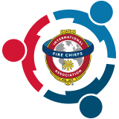Many associations are looking in the mirror this year and asking a variation of the same question: how do we better reflect the communities we serve and elevate more diverse and underrepresented voices in our organizations to help fulfill our mission?
Recognizing the need for change
In a past role at the International Association of Fire Chiefs (IAFC), I struggled with my colleagues to answer this same question. The Department of Labor (DOL) released a report in 2014 that highlighted the lack of diversity in the public safety field, including fire and emergency services. This confirmed the systemic diversity issues we suspected in the industry. As an association is often a reflection of its membership, this explained the lack of diversity within IAFC’s leadership.
IAFC responded to the report by making diversity an intentional input of its strategic plan. We developed and released a Human Dignity Statement in 2013. Additionally, our Human Relations Committee provided guidance on several issues including diversity, equity and inclusion. My role was staff liaison to this committee.

Despite these efforts, the organization still lacked diversity in its leadership positions. In 2016, after some soul searching and important conversations at the board level about who the organization should represent, IAFC decided to act on its vision. We created the IAFC Diversity Executive Leadership Program (iDELP) aimed at improving diversity, equity, and inclusion (DEI) within the organization and the industry.
Every organization will need to confront its own unique journey, but these lessons may resonate with association leaders looking to put their values into action.
Set a foundational policy
IAFC was intentional about including diversity and inclusion in its strategic plan, which is an important first step. While words are not enough to move the needle on DEI, articulating where your organization stands on DEI is a clear signal to everyone inside and outside the organization of who and what your organization represents. If you are unsure about the right language to use, borrow from strong examples in the association industry. Alternatively, hire someone to lead a discussion with your leadership and craft a policy statement that aligns with your organization’s values and guiding principles.
Set a baseline for the DEI program
Once the organization has established a vision and direction, the next step is to develop a baseline of data to measure progress. This can be a baseline from your own data or from external sources, such as industry demographics collected by universities or federal agencies. The leveraged data from the 2014 DOL report, along with U.S. Census information, was used as a baseline to measure itself against when setting out to improve the board and volunteer leadership diversity.
Establishing a baseline and setting clear goals is pivotal to ensuring consistent progress and improvements. ASAE has a great example of a board diversity policy and volunteer model.
Establish a strategy and tactics
You have a policy statement, baseline data, and an outline of the gap in diversity in your industry and/or organization. Now what? Invite stakeholders from targeted special interest groups to contribute diverse perspectives and create a strategic plan and timeline to map a clear path forward. The strategic plan will serve as the action plan for the mission statement and a roadmap for volunteer leaders and staff. Another important tool is a strategic implementation plan, which includes objectives and initiatives that the organization plans to execute to achieve its mission and reach its destination.
The strategic focus of iDELP is to provide support to individuals from under-represented groups and to create a diverse workforce that can advance into the ranks of leadership within the organization. From this focus, the program curriculum was built, outlining key initiatives to achieve the program goals.
Track the metrics that matter
Measurement is a key aspect of ensuring that a strategy progresses and that a program is successful. While the iDELP program is still young, it has demonstrated progress across a set of metrics set by the organization from the outset. From the onset of the program, the program, led by a mix of volunteer leaders and staff, identified specific metrics to monitor as the program progressed.
Here are some example metrics used for iDELP:
- Percentage (%) of underrepresented groups on board of directors
- Percentage (%) of underrepresented groups within chapter, committee and other leadership positions
- Career advancement of individuals
- Educational sessions by underrepresented speakers
- Educational sessions discussing DEI issues
- Number of industry leaders educated in this area
- Best practices shared
Don’t be afraid to revisit and improve metrics as the program or initiative progresses. As the saying goes, what gets measured gets managed. It is important to be clear at what you set out to do and measure clear progress against those goals.
Provide the industry with guidance
While the iDELP program was fundamental to IAFC’s progress towards greater DEI in the organization and industry, I’m especially proud of the best practices we helped create for the industry. Most recently, the organization released a guide to help fire departments integrate DEI into their processes. We built the guide with a coalition of diverse stakeholders from across the industry, including members of iDELP and our special interest groups. Fire departments are now able to start building DEI values into their everyday work and better represent the communities they serve—all thanks to a diverse group of passionate leaders who collaborated on a shared mission.
In closing
The road to being a truly diverse, equitable and inclusive organization is a long one, but ultimately worth the effort. Hold your organization accountable to go beyond words to action. A great phrase I learned growing up that I still use frequently is “Don’t talk about it, be about it.”
Learn more in the recorded webinar “Turning DEI Commitments into Action” featuring leaders in Infectious Diseases Society and Society of Women Engineers.
Tag(s):
Governance and Leadership
Market Research
5 min read
| March 26, 2025
Using Market Research to Drive an Advocacy Agenda
Read More
Governance and Leadership
6 min read
| February 20, 2025
Meeting the Moment: Leading Through Uncertainty
Read More
Strategic Planning
9 min read
| January 28, 2025






